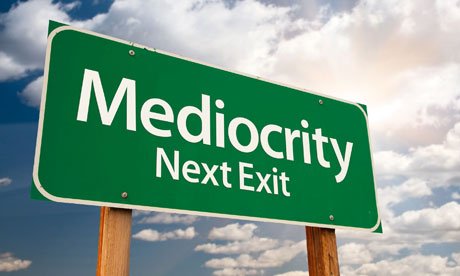LIVING AND LEADING WITH AUTHENTICITY: How We’ve Missed The Mark – And How We Can Correct It
A lightening rod attracts power by its mere presence.
The same goes for great leaders with substance, depth, and strength of character.
Authenticity has come under considerable criticism of late – and rightly so. Leaders have exposed too much of themselves in the wrong way and have lost credibility in an effort to be “authentic.” People justify hurting people by claiming that their actions reflect their “authentic self.” Others are using authenticity as an excuse to reject any form of “impression management” and their self-centered behavior diminishes trustworthiness. The real failures are those who have learned how to fake being authentic.
The problem isn’t authenticity. The problem is that authenticity is misunderstood.
While the statement, “to thine own self be true,” can be inspirational, it’s important to understand which self you are referring to when you decide to be true to it. Are you talking about your impulsive, emotional self? Your self-centered self? Your accountable self? Your insecure self? Or your true – authentic self? And how do you know the difference? Where is your road map to discover the difference? Where are your tools?
American philosopher, William James, said “there lies within every being a place where, when connected to it, we feel deeply and intensely alive. At such moments there is a quiet voice inside that says, ‘This is the real me.’” This is the home of your authentic self. And while finding and describing this place is as difficult as it is to describe why something is beautiful, here are three clues to know you are on the path to living and leading authentically.
Authenticity means:
- A sincere devotion to personal growth and self-awareness. Sincere is derived from the Latin ‘sine’ (without) and ‘cera’ (wax) or without wax. According to one popular explanation, dishonest sculptors in ancient Rome and Greece would cover flaws in their work with wax to deceive the potential buyer; therefore, a sculpture “without wax” would mean honesty in its imperfection. Authenticity is indicated by a level of comfort with one’s self and one’s cracks. This comes from a life-long commitment to knowing yourself. To quote Leonard Cohen, “Forget your perfect offering. There’s a crack in everything. That’s how the light gets in.”
- A commitment to discern how you share your imperfection with the world. Authenticity isn’t about exposing yourself recklessly. Authenticity, by definition, requires a commitment to both honesty and respect. Indiscriminate spewing of your faults, weaknesses, and emotions is disrespectful to the people who depend on you. This is why a dedication to self-awareness is an indication of authenticity. Don’t turn your team into your therapist. Be 100% honest with your support system away from your work, so you can be comfortable with yourself when you get to work.
- Measure your life by how you make the world better. Anything short of an imperfect dedication to helping make a better world is not authentic. Caring about others and basic goodness is in our nature. Don’t mistake authenticity for a method of coping and surviving. For example, being a jerk is never authentic. No one is born a jerk. It’s not in our nature. Being a jerk is a coping response learned somewhere along the way. A sincere desire to serve a cause beyond self-interest is a necessary quality of authentic presence.









